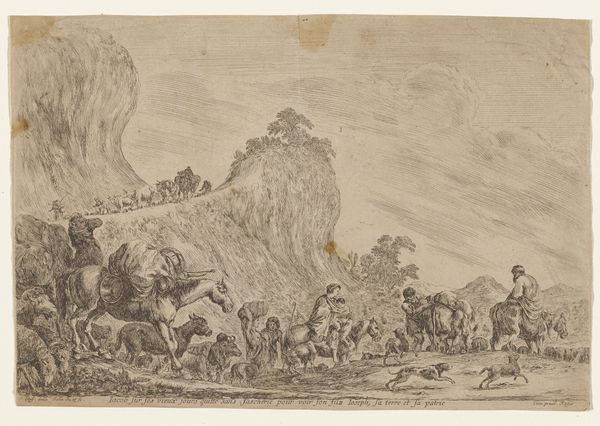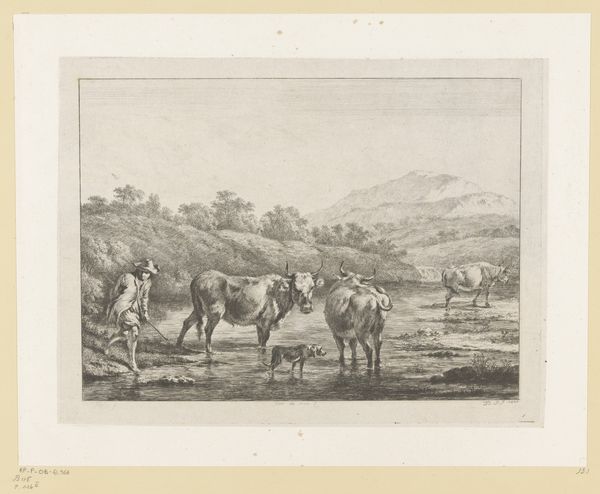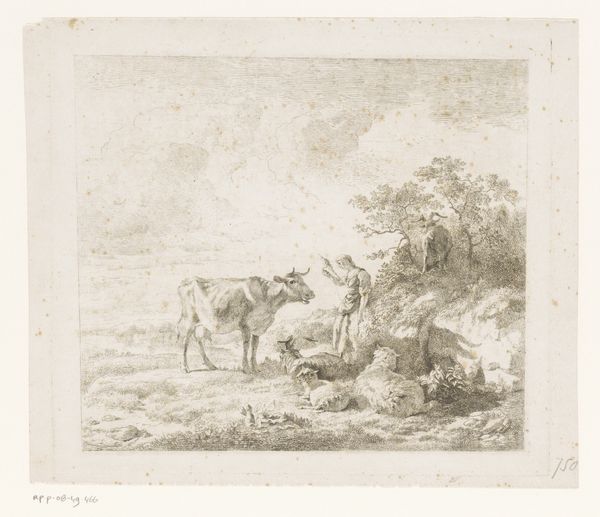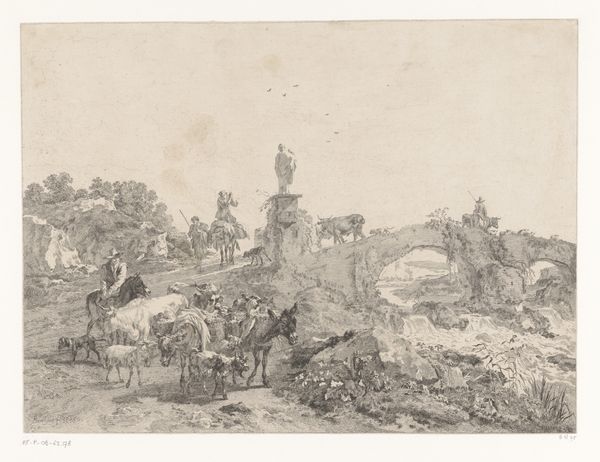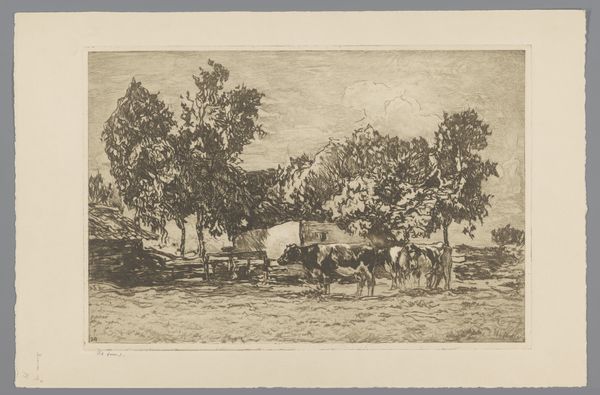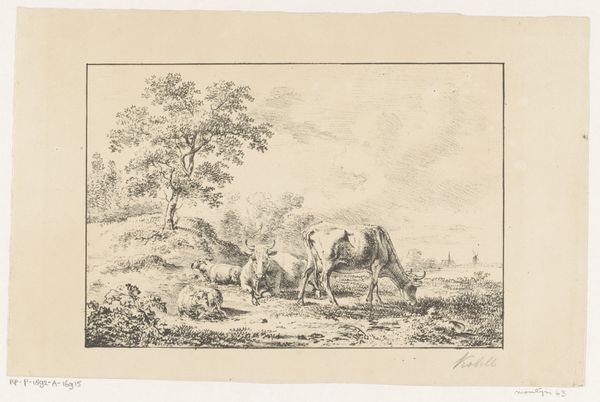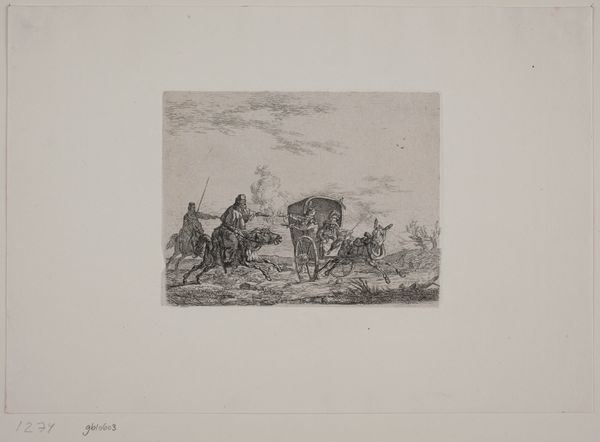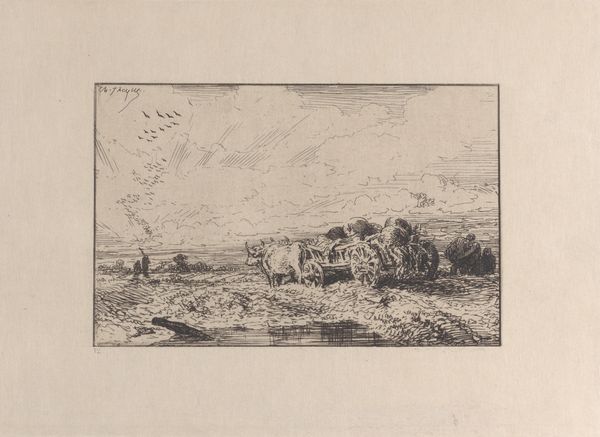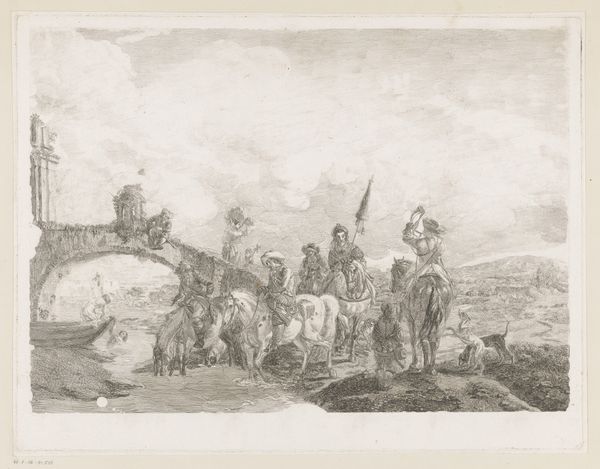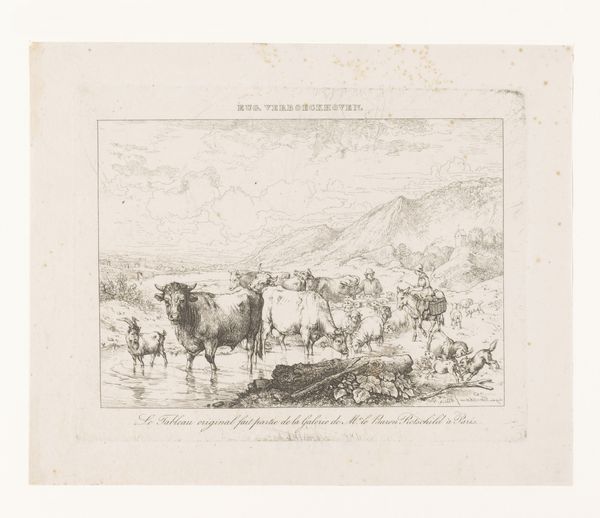
drawing, print, etching
#
drawing
#
baroque
# print
#
etching
#
landscape
#
figuration
#
form
#
genre-painting
Dimensions: 5 1/2 x 5 7/16 in. (13.97 x 13.81 cm) (sheet, circular)
Copyright: Public Domain
Editor: This etching by Stefano della Bella, titled "Shepherdess and Flock," dates back to the 17th century. It's such a detailed scene contained within this circular frame. The sky seems heavy, pressing down on the shepherdess and her animals. What do you see in this piece, particularly given its historical context? Curator: I see a snapshot of pastoral life, but one imbued with the realities of gender and labor. Consider the shepherdess: a figure often romanticized, yet here we see a young woman situated within a socio-economic structure that dictates her role. How might this image engage with or subvert the traditional representations of women in 17th-century art and society? Editor: That’s interesting! I hadn’t thought about it in terms of gendered labor. So, beyond just a pretty landscape, it's subtly commenting on women's work? Curator: Exactly. Etchings like this circulated widely. Ask yourself, what narratives were being perpetuated or challenged through the dissemination of such images? How does the 'flock' relate to a broader historical context about women, nature, and vulnerability? Consider the political dimensions embedded within these seemingly bucolic scenes. What sort of ownership does she have over that flock? What limitations has society imposed on her prospects? Editor: Wow, I'm definitely seeing it in a completely new light now, with its potential critique of the status quo of the time. Curator: Art allows us a deeper understanding of lives, and their meanings, and that includes shining light on the work, both literal and figurative, done by those often ignored by history. It becomes more than an etching; it's a dialogue about gender, labor, and societal expectations. Editor: I appreciate the deeper context and now I can see more in it. Thanks!
Comments
No comments
Be the first to comment and join the conversation on the ultimate creative platform.

